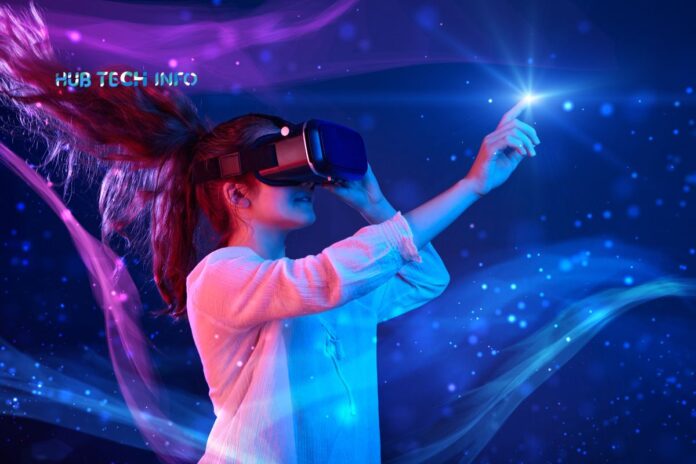From simple fitness trackers to companions on our wrists, wearable technology has transformed in just a decade. These devices now monitor health, streamline communication, and even blur the lines between the real and digital worlds. As technology races forward, the potential for wearables seems limitless, impacting everything from healthcare to entertainment. Let’s dive into the exciting trends shaping wearables and explore how they might influence our lives in the years to come.
The Wearable Landscape Today
Health and Fitness: Wearables exploded in popularity thanks to their health and fitness applications. Fitbit, Apple Watch, and Garmin have become ubiquitous, helping users track workouts, heart rate, sleep, and other health metrics. This real-time data empowers users to make informed choices about their well-being.
Communication and Connection: Smart watches and fitness trackers have transformed into communication hubs, offering notifications, messaging, and even calling functionalities. These devices bridge the gap between smart phones and wearables, providing seamless and convenient ways to stay connected.
Augmented Reality and Entertainment: Augmented reality (AR) glasses and headsets represent the cutting edge of wearable tech in entertainment and productivity. Products like Microsoft HoloLens and rumored Apple AR glasses aim to overlay digital information onto the real world, creating a richer user experience. These devices have the potential to revolutionize how we interact with both physical and digital spaces.
The Future of Wearables
Advanced Health Monitoring: The future of wearable tech in healthcare is packed with promise. Today’s devices monitor vitals and detect irregularities, but future wearables are expected to offer even more sophisticated health monitoring.
Imagine: Non-invasive glucose monitoring for diabetics, eliminating finger pricks. Continuous blood pressure and ECG monitoring for better cardiovascular disease management. Advanced sensors tracking hydration and nutrient deficiencies, providing personalized dietary recommendations.
Personalized Healthcare: Wearables will play a central role in personalized healthcare. These devices won’t just monitor metrics, they’ll analyze data to provide tailored health insights and recommendations. This personalized approach can lead to earlier diagnoses, preventive care, and customized treatment plans, ultimately improving health outcomes.
AI Integration: Artificial intelligence (AI) will supercharge wearables. AI algorithms can analyze the vast amount of data collected by wearables to identify patterns, predict health issues, and offer personalized advice. For instance, AI could detect early signs of a trial fibrillation or sleep apnea, prompting users to seek medical attention before issues worsen.

Mental Health Focus: Wearable technology is poised to make significant strides in mental health. Devices can monitor physiological indicators of stress, anxiety, and depression, such as heart rate variability and skin conductance. Future wearables could provide real-time interventions, like guided breathing exercises or mindfulness prompts, to help users manage their mental well-being more effectively.
Beyond Health: A Broader Impact
Enhanced Connectivity: The future of wearables will see improved connectivity and interoperability between devices. The development of 5G networks will enable faster and more reliable communication between wearables and other smart devices. This enhanced connectivity will facilitate seamless data sharing and integration, creating a more cohesive and connected ecosystem.
Fashion Meets Function: As wearables become more integrated into daily life, the focus on fashion and design will increase. Companies are already collaborating with fashion brands to create wearables that are both stylish and functional. Future wearables will likely be more customizable, allowing users to personalize the look and feel of their devices.
Augmented and Virtual Reality: AR and VR wearables are expected to become mainstream, offering new ways to interact with digital content and the physical world. These technologies have applications beyond entertainment, including education, training, and remote work. Imagine AR glasses overlaying navigation directions, assisting with complex tasks, or providing real-time language translation.
The Workplace Revolution: Wearable technology will play an increasingly important role in the workplace, enhancing productivity, safety, and employee well-being. Smart glasses can provide hands-free access to information, improving efficiency in tasks such as logistics and manufacturing. Wearable sensors can monitor workers’ health and safety, alerting them to potential hazards or fatigue.
Sustainability in Focus: Future wearables will likely prioritize energy efficiency and sustainability. Advances in battery technology and energy harvesting methods, like solar power, will enable longer battery life and reduce the environmental impact of wearables. Additionally, manufacturers will likely use sustainable materials and processes in production.
Challenges and Considerations
Privacy and Security: As wearables collect more personal data, privacy and security concerns become paramount. Ensuring user data is protected and used responsibly will be crucial. Manufacturers and developers will need to implement robust security measures and transparent data policies to maintain user trust.
Ethical Considerations: The widespread adoption of wearable technology raises ethical questions, particularly concerning data ownership and the potential for surveillance. Clear guidelines and regulations will be necessary to address these issues and ensure that wearable technology is used ethically and for the benefit of users.
Accessibility and Affordability: For wearable technology to reach its full potential, it must be accessible and affordable to a broad range of users. Efforts to reduce costs and improve accessibility will be essential in ensuring that the benefits of wearable technology are available to all, regardless of socioeconomic status.
Final Words
The landscape of wearable technology holds immense promise, with upcoming advancements set to transform sectors like healthcare, communication, and entertainment.
As these gadgets become increasingly advanced, they will open new avenues for personalized health tracking, improved connectivity, and enhanced overall quality of life. Nonetheless, it is vital to tackle issues related to privacy, security, and accessibility to unlock the full potential of wearable tech. By addressing these challenges head-on, we can ensure that the benefits of wearable technology are accessible to everyone.
Read Also:



